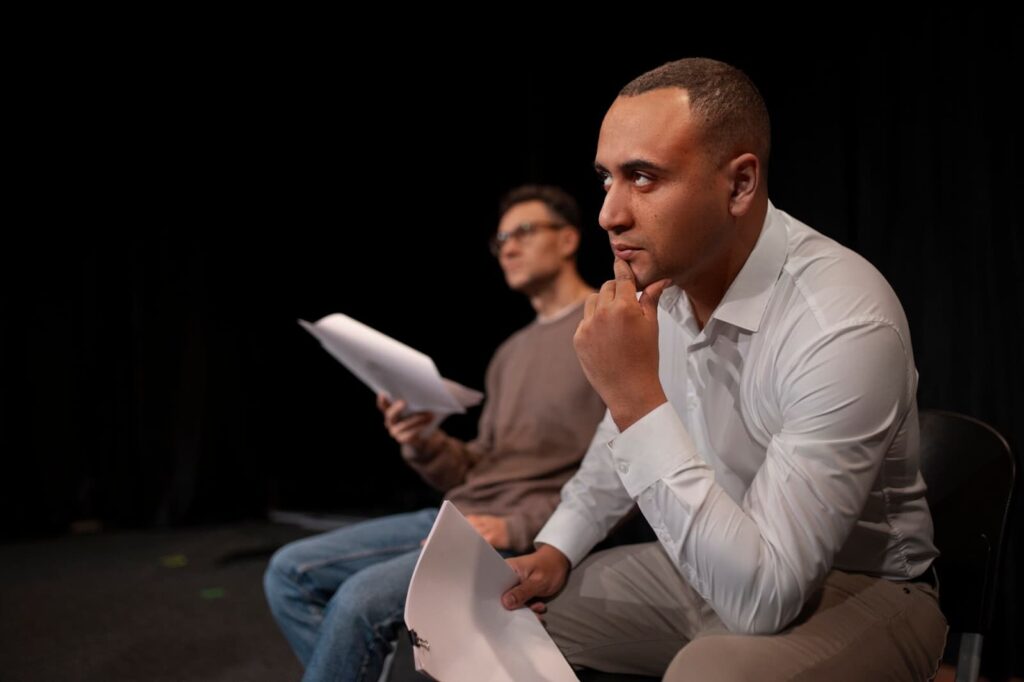Callbacks are an essential part of the theater industry, but many people outside of the performing arts world may not be familiar with what they are and how they work. In simple terms, callbacks are a second round of auditions or interviews where selected candidates are invited back to showcase their skills and potential for a specific role or production. They are often used to help directors and casting teams make final decisions on who to cast in a show.
While callbacks may seem intimidating or confusing at first glance, they are a crucial step in the casting process that gives actors another chance to shine and secure their dream role. In this article, we will take a deep dive into everything you need to know about callbacks in theater, including how they work, why they are necessary, and what you can expect if you ever attend one.
The Basics of Callbacks
Before we dive into the nitty-gritty details of callbacks, let’s start with the basics. As mentioned earlier, callbacks are a second round of auditions or interviews that select candidates are invited to after the initial round. These candidates have caught the eye of the director or casting team and have made it to the next stage of the casting process.
Callbacks can take place in a variety of environments, from a typical audition room to a rehearsal space or even a stage. It all depends on the production and the preferences of the director. Typically, callbacks involve reading lines from the script, performing songs or monologues, and participating in dance or movement exercises.
Once the callbacks are completed, the director and casting team will review the performances and make final decisions on who to cast in the show. This decision is based not only on talent but also on factors such as chemistry with other actors, availability, and overall fit for the character and production.
Why Are Callbacks Necessary?
You may be wondering why callbacks are necessary if actors have already auditioned for the initial round. The truth is, callbacks serve multiple purposes and are an essential part of the casting process.
Firstly, callbacks help the director and casting team see how candidates perform under pressure. The initial audition can be nerve-wracking, and actors may not showcase their full potential. With callbacks, they have a chance to redeem themselves and show their skills in a more relaxed and focused environment.
Secondly, callbacks allow the director and casting team to see how candidates work together and interact with one another. This is especially important for productions that require chemistry between characters, such as romantic leads or close friends. It also gives them a chance to see how candidates take direction and make adjustments to their performances.
Lastly, callbacks help narrow down the pool of candidates and make final decisions on who to cast in the show. With so many talented performers vying for roles, callbacks give directors the opportunity to see the top contenders side by side and make informed decisions based on what they are looking for in a production.

Preparing for Callbacks
If you have been invited to a callback, congratulations! This means that the director and casting team believe you have what it takes to potentially be cast in the show. However, this is just the first step, and there are still things you can do to prepare and increase your chances of being cast.
Familiarize Yourself with the Material
The most crucial aspect of preparing for callbacks is familiarizing yourself with the material. This includes the script, songs, and/or monologues that you were given for the initial audition. Make sure you know your lines and any notes or adjustments the director gave you during the audition.
It’s also a good idea to research the show and its characters to get a better understanding of their motivations, relationships, and overall tone. This will help you make more informed choices and bring depth to your performance during the callback.
Practice, Practice, Practice
Once you are familiar with the material, it’s time to practice. This includes rehearsing your lines, songs, and/or monologues multiple times to ensure that you have them down pat. It also helps to record yourself and watch it back to see where you can improve.
You should also practice in front of someone else, whether it’s a friend, family member, or fellow actor. This will give you an opportunity to receive feedback and make adjustments before the actual callback.
Take Care of Yourself
In the days leading up to the callback, make sure to take care of yourself both physically and mentally. Get enough sleep, eat well, and stay hydrated. If you’re feeling anxious, try some relaxation techniques such as deep breathing or meditation.
Take care of your voice as well, especially if you are required to sing during the callback. Avoid screaming or straining your voice and warm up properly before singing. Keeping your body and mind in good shape will help you perform at your best during the callback.
What Happens During Callbacks?
Now that you know what callbacks are and how to prepare for them let’s dive into what you can expect during the actual callback.
Reading Sides from the Script
One common activity during callbacks is reading sides from the script. Sides are specific scenes or pages from the script that the director and casting team want to see performed by the actors. They may ask you to read with a specific partner or with different partners to see how you work together.
When reading sides, it’s important to listen to direction and be open to making changes to your performance. Remember to use the information you learned about the show and its characters to inform your choices and bring depth to your performance.
Singing Songs/Monologues
If you were given songs or monologues during the initial audition, there is a high chance that you will be asked to perform them again during callbacks. If this is the case, make sure to practice and review them beforehand.
When performing songs or monologues, remember to connect with the material and bring your own unique interpretation to it. This is your chance to showcase your voice, acting skills, and stage presence.
Dance/Movement Exercises
Depending on the production, callbacks may involve dance or movement exercises. This is especially common in musical theater productions. You may be asked to learn a short dance routine or participate in movement exercises to see how well you can move and follow choreography.
If you’re not a trained dancer, don’t stress! The casting team is looking for potential and the ability to take direction. Be open to learning and have fun with it.

Tips for Nailing Your Callback
Now that you know what to expect during callbacks, here are some tips to help you nail your performance and increase your chances of being cast in the show.
- Be yourself: It’s important to stay true to who you are as an actor and bring your unique skills and personality to the role. Don’t try to imitate someone else or be someone you’re not;
- Take direction: Directors and casting teams love to see actors who can take direction and make adjustments on the spot. Be open to feedback and willing to try new things;
- Don’t get discouraged: It’s possible that you may not be cast in the show, even after a callback. Remember that casting decisions are based on a variety of factors, and there will always be more opportunities in the future;
- Have confidence: Believe in yourself and your abilities. Confidence shows in your performance and can make a great impression on the casting team.
Conclusion
Callbacks may seem daunting, but they are a fantastic opportunity to showcase your skills and potentially land your dream role. By familiarizing yourself with the material, practicing, and taking care of yourself, you can increase your chances of nailing your callback and being cast in the show.
Remember to stay true to yourself, take direction, and have confidence in your abilities. And even if you don’t get cast, use it as a learning experience and keep auditioning for future productions. With hard work, dedication, and perseverance, you will achieve your goals in the world of theater.